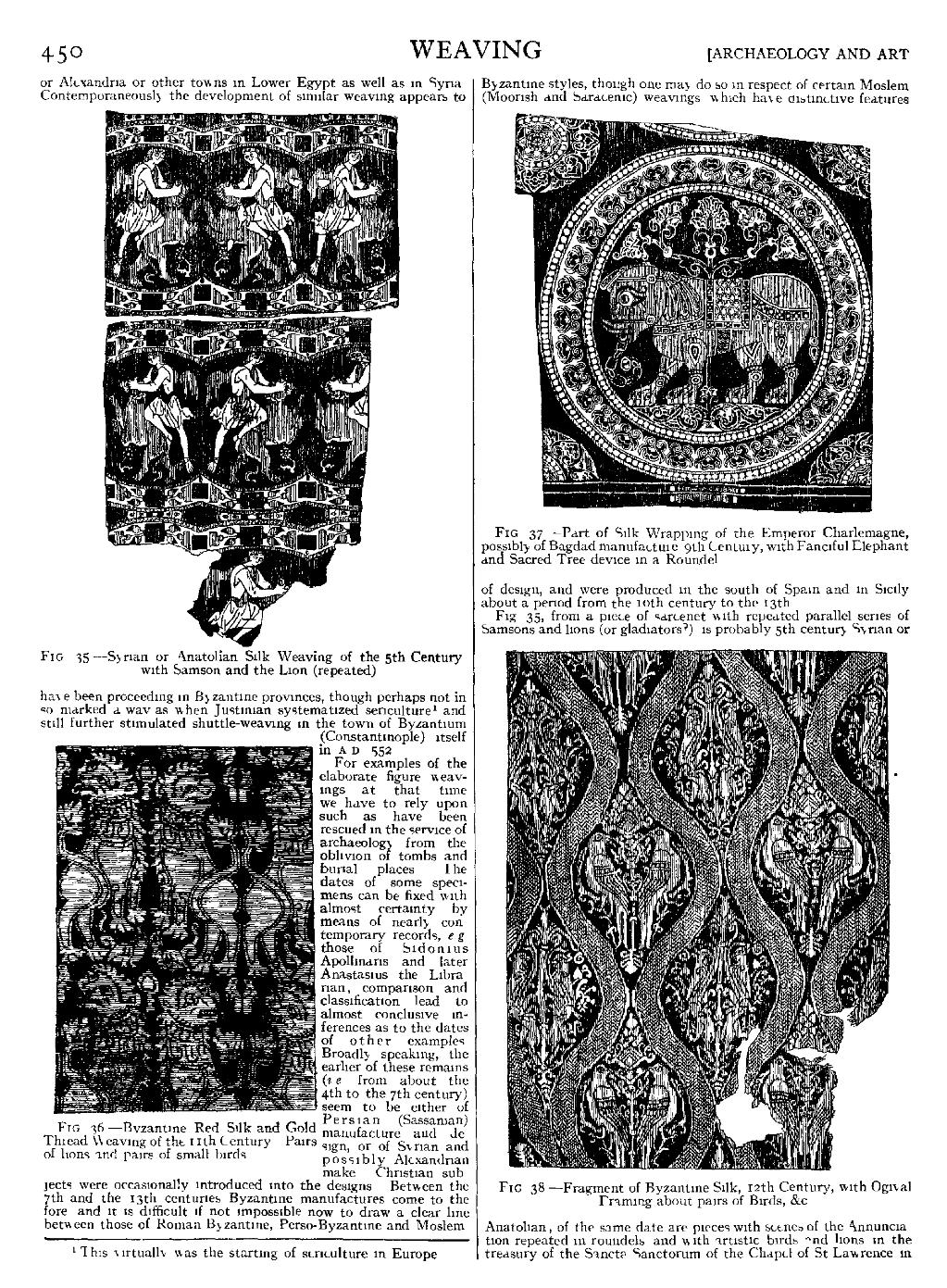or Alexandria or other towns in Lower Egypt as well as in Syria.
Contemporaneously the development of similar weaving appears to
have been proceeding in Byzantine provinces, though perhaps not in
so marked a way as when Justinian systematized sericulture[1] and
still further stimulated shuttle-weaving in the town of Byzantium
(Constantinople) itself
in A.D. 552.

Fig 35—Syrian or Anatolian Silk Weaving of the 5th Century,
with Samson and the Lion (repeated).

Fig 36—Byzantine Red Silk and Gold
Thread Weaving of the 11th Century,
Pairs of lions and pairs of small birds.
For examples of the elaborate figure weavings at that time we have to rely upon such as have been rescued in the service of archaeology from the oblivion of tombs and burial-places. The dates of some specimens can be fixed with almost certainty by means of nearly contemporary records, e.g. those of Sidonius Apollinaris and later Anastasius the Librarian; comparison and classification lead to almost conclusive inferences as to the dates of other examples. Broadly speaking, the earlier of these remains (i.e. from about the 4th to the 7th century) seem to be either of Persian (Sassanian) manufacture and design, or of Syrian and possibly Alexandrian make. Christian subjects were occasionally introduced into the designs. Between the 7th and the 13th centuries Byzantine manufactures come to the fore, and it is difficult if not impossible now to draw a clear line between those of Roman-Byzantine, Perso-Byzantine and Moslem Byzantine styles, though one may do so in respect of certain Moslem (Moorish and Saracenic) weavings, which have distinctive features of design, and were produced in the south of Spain and in Sicily about a period from the 10th century to the 13th.

Fig 37—Part of Silk Wrapping of the Emperor Charlemagne,
possibly of Bagdad manufacture, 9th Century, with Fanciful Elephant
and Sacred Tree device in a Roundel.

Fig 38—Fragment of Byzantine Silk, 12th Century, with Ogival
Framing about pairs of Birds, &c.
Fig. 35. from a piece of sarcenet with repeated parallel series of Samsons and lions (or gladiators?), is probably 5th-century Syrian or Anatolian: of the same date are pieces with scenes of the Annunciation repeated in roundels, and with artistic birds and lions, in the treasury of the Sancta Sanctorum of the Chapel of St Lawrence in
- ↑ This virtually was the starting of sericulture in Europe.

